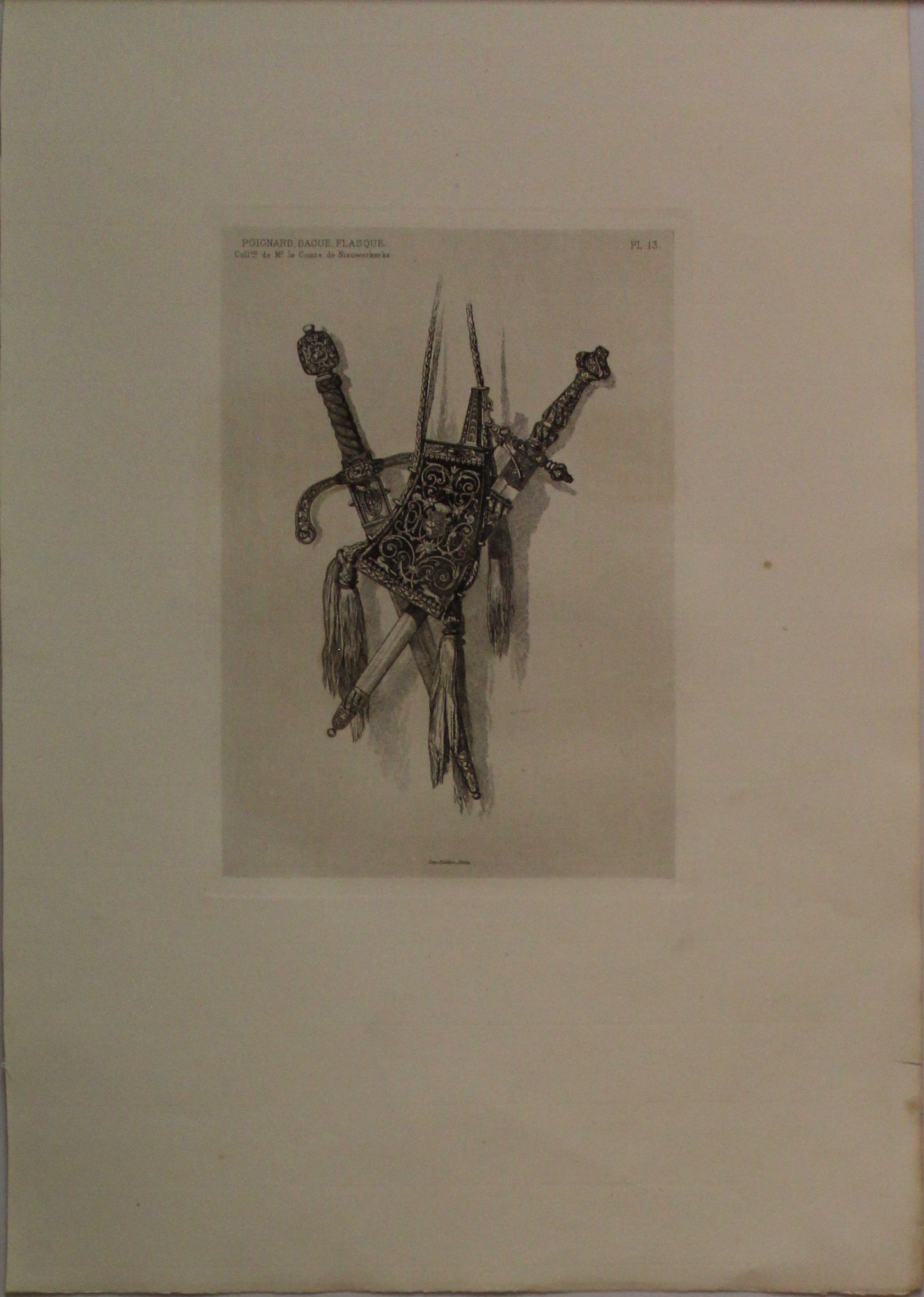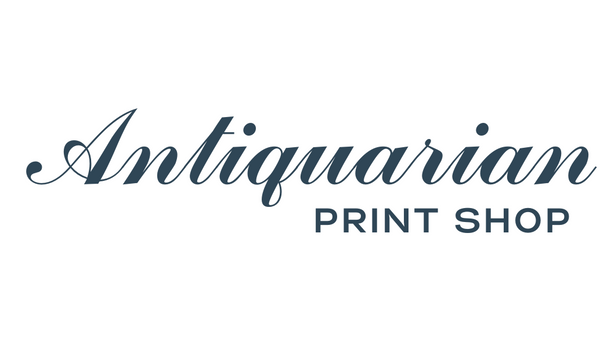Antiquarian Print Shop
Decorator, Weapons, Les Collections, Celebres, D'Oeuvres D'Art, Poignard, Dague, Flasque, From the Collection M le Comte de Niewerkerke, Plate 13, 1864
Decorator, Weapons, Les Collections, Celebres, D'Oeuvres D'Art, Poignard, Dague, Flasque, From the Collection M le Comte de Niewerkerke, Plate 13, 1864
Couldn't load pickup availability
Date: 1864
Engraver: Delatre
Published by Goupil and Co, Editors, in Paris
Paper Size: 445 x 305mm
Print Size: 230 x 165mm
Condition: Good
Technique: Copperplate Engraving
Price: $150
Description:
THE DAGGER (engraving on the right).
AME is damascened in gold on the heel; the handle & the two buttons of the guards repeat the arrangement of ornaments that form the pommel. These are incisions perforated in spirals on the protruding parts of the whole, enriched by small gold Beurons intertwining on the blued steel background. The scabbard of this pretty poignant has its fittings of workmanship similar to that of its handle. (11 comes from the collection of the Vicomte de Courval.)
THE DAGUE
(engraving on the left). Its blade is very sharp; its frame of chiseled gray iron is, in places, worked open. Its quillons, curved, are complicated on its face by a ring intended, in action, to preserve the thumb. Figurines & small medallions framed in ornaments decorate the pommel, the guard branches, & the fittings of the scabbard, which bears a suspension ring on the reverse.
FLASK (middle engraving).
(Flask) was the name given during the sixteenth century to the box of wood, ivory, horn, or metal, intended to contain, suspended from the side by some string, the powder with which portable firearms were loaded. Flask derives, or fafa, facque, case- pocket, coming from the German fach, case- purse, or rather from the Languedoc Marco, hunter's powder flask, itself deriving from the Italian farca, bottle. Brantôme (6) cites the Milan flasks as having been the most sought-after of his time, and the best shaped; he says they are very superior to those of the supplies made at Blangy.
The parts of its frame, the lower part forming the underside & the upper part where the powder tube is closed with a valve by a spring, are of copper, engraved & gilded. The two square faces of this flask carry, like its sides furnished with suspension studs, inlays in Tauchie of ivory nets circumventing and intertwining by complicated volutes of figures of animals and fruits. In a medallion, in the center of the reverse, is represented as an emblem: a squirrel biting an apple; on the other side, on the front, is, adjusted in the overall ornamentation, a coat of arms. It is engraved with the arms of the electorate of Saxony, which bears on the sinister flank, part for Saxony, barred Or & Sable of eight pieces a cancerlin Vert, in a band debruising over the whole & on the dexter flank, two swords gules in saltire, the points high for the dignity of the grand marshal & elector of the empire. The crest is surmounted by an elector's cap. (1) Certain courtiers in the antechamber were called coffer- pickers, because, idle, they cut with their daggers the babuts on which they sat down to wait, (Diet. com, de Le Roux.) (a) M. Bandello (in Germany, very frequently, the blades of the daggers carried, in a case which formed part of it, an awl & a fork). (3) July 15, 1547. See Brantôme, Discours sur les duels and Audiguier, Ancien usage des duels. (4) Memoirs of Pierre de Lesteile, year 1577.- (5) Henry Beyla.- (6) Life of M. de Strozze (of the French Crowns).
Share


